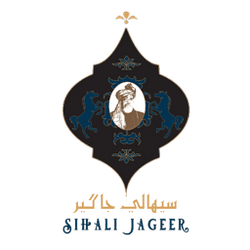
Craftwork, artistry, and expertise that are a few generations old, the ethos of the ganga-jamuna tehzeeb. The skills honed centuries ago are in a danger of disappearing, with more lucrative (and far easier) ways to make a livelihood. Once patronized by the kings and emperors, each generation of artisans face the threat of economics.
What remains constant is the sheer beauty of what they create. We make an attempt at keeping the expertise and the beauty relevant, using different weaves from our vast country, matching them with the handwork from another, adding embroidery and the borders… the result is the beauty you enjoy.
Here is a list of some of the expertise we pay attention to. And about the weaves and fabrics itself. When you are better acquainted with the labor of love each piece is made of, and we hope you cherish the revival of the styles in clothes as much.
Aari work
A special needle that is similar to a pen, the sequins and beads of the
Chanderi weaves
Legend has it that the traditional Chanderi saris of Madhya Pradesh were first introduced by Shishupal, cousin of Lord Krishna. Pure silk, cotton, and a blend of both, the light and sheer texture earned this the name of “woven air”
Gota Patti
The artisans are from Jaipur, Khandela, Shekhawati, in Rajasthan. Pieces of zari ribbon are cut in different shapes and sewed down at the edges to combine together in the traditional patterns.
Ikkat
A dyeing technique that uses resist dying on the yarns prior to dyeing and weaving the fabric. Orissa’s Sambalpuri Ikat is quite different from the sharp Ikkat patterns I Gujarat, which is again different from the Malay peninsula. The Cambodian ikat is a weft ikat woven of silk on a multi-shaft
loom with an uneven twill weave, which results in the weft threads showing more prominently on the front of the fabric than the back.
Kanjeevaram weave
This is the most expensive of the dozen handwoven silks in India. It is known for its lustrous fabric and the elaborate zari work, still done in gold in some saris. We often use the temple borders weave for a dress or other styles.
Karchob
A raised zari metallic thread embroidery created by sewing flat stitches on cotton padding.
While this kind of embroidery is used from everything from bridal dresses to curtains and even tents, it is still a beautiful way of dressing up even regular clothes.
Kamdani
Small rectangular pieces of metal are embroidered into the threads of the fabric. Mukesh work (known also as
Zardosi
The ancient art of sewing gold and silver metal threads on a fabric, this embroidery came from Persia during the 17
silks are embellished with
Enjoy the clothes you wear, enjoy the pride of the artist who created it too.

